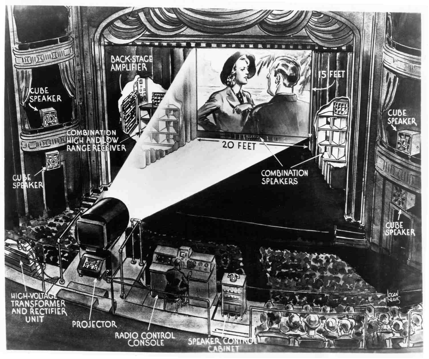Industry Groups Grapple with the Problem
Several industry groups are working to study the various business and technical aspects of digital cinema and are hoping to develop practical proposals and ideas which they can sell to the other industry groups, as well as to the studios, distributors and exhibitors.
The Motion Picture Association (MPA) has formed a study group that is primarily concerned with preventing piracy of digital cinema files.
NATO, the National Association of Theatre Owners, has formed a committee to look at the subject from the exhibitors’ perspective.
SMPTE has formed the DC28 Study Group, which is broken up into several sub-groups to examine the technical aspects of the various approaches to digital cinema.
Projection Technology Being Considered for Digital Cinema
The centerpiece of digital cinema is of course the projector. There are endless discussions going on right now about which technology is best suited for a rollout. It should be pointed out that, while projectors are the focus of today’s discussions, other solutions involving flat panel displays or similar technology might eventually become available that work even better.
The most popular projection technology today for digital cinema applications is based on the Texas instruments Digital Light Processing (DLP) system. TI itself has produced a prototype projector based around its special DLP Cinema technology, which represents an enhancement of its standard DLP products. The DLP technology is based on its digital micromirror devices (DMDs) and can produce SXGA resolution (1280 x 1024 pixels).
The JVC Professional Products Company offers a system based on a reflective liquid crystal technology developed by Hughes and JVC. This Image Light Amplifier (“ILA”) technology resolve up to 1500 TV lines. At this time, JVC is the only vendor of cinema quality ILA-based projectors.
A new company called Silicon Light Machines has described a laser-based projection system that could prove to be very useful for digital cinema, although they have yet to make a public demonstration of this technology.
Other technologies are coming into the market that may also prove themselves useful for digital cinema applications, but the ones listed above are the most popular today.
